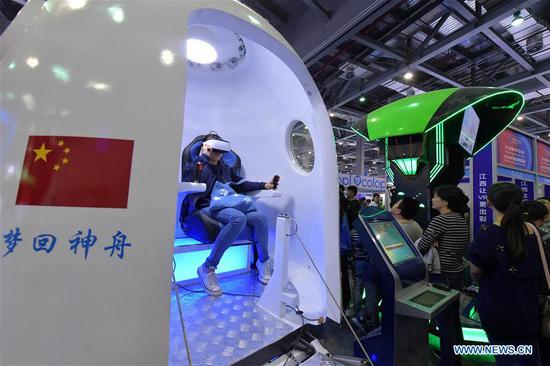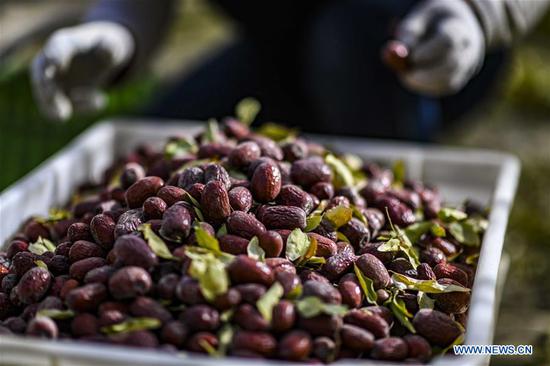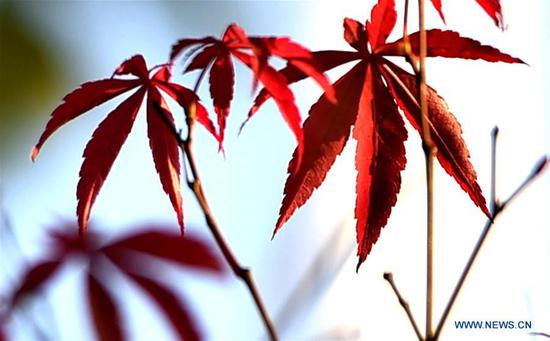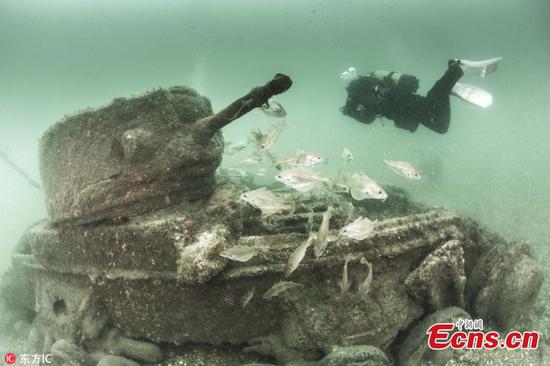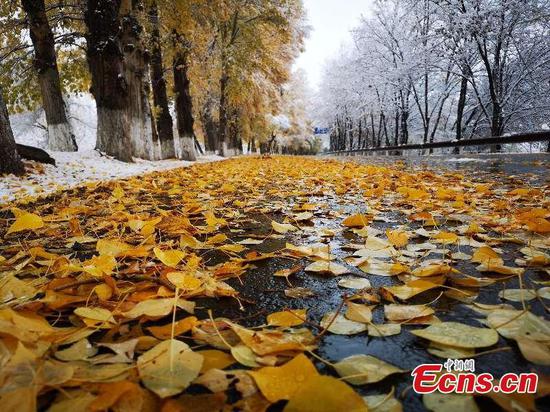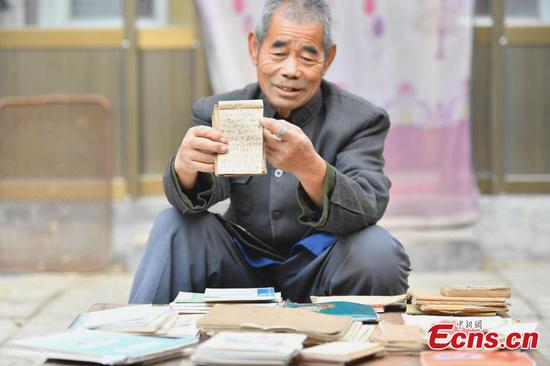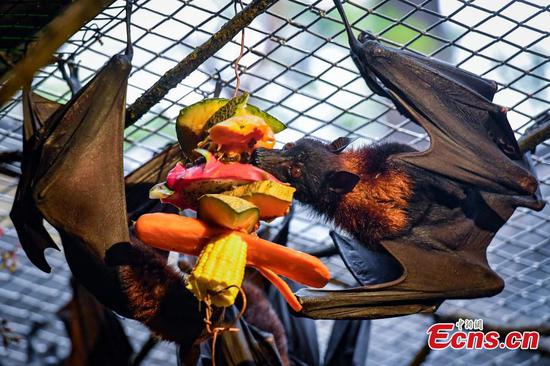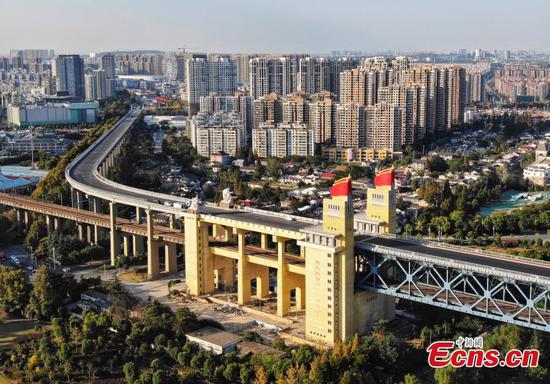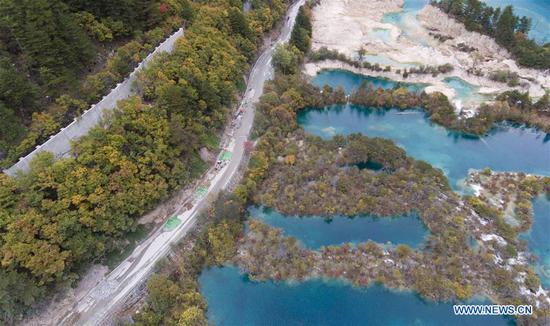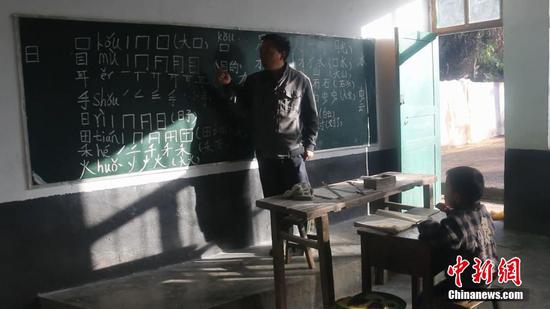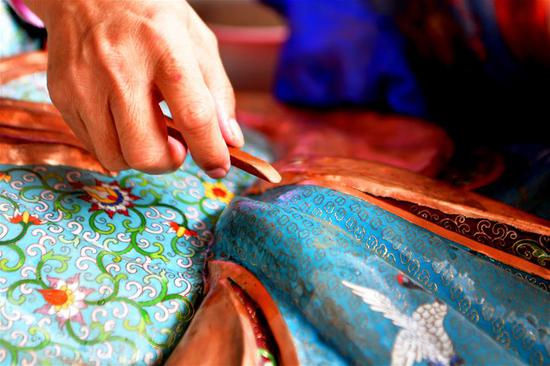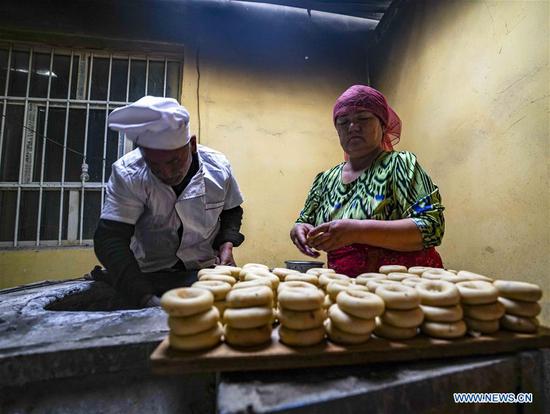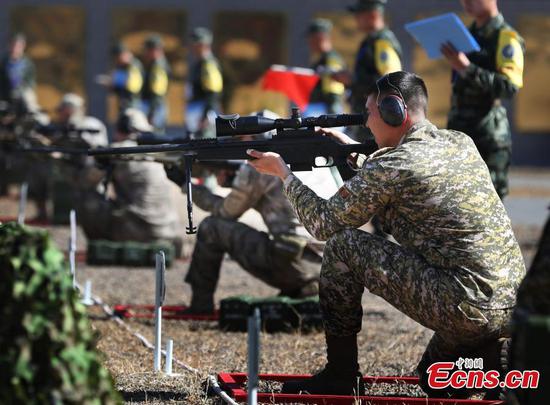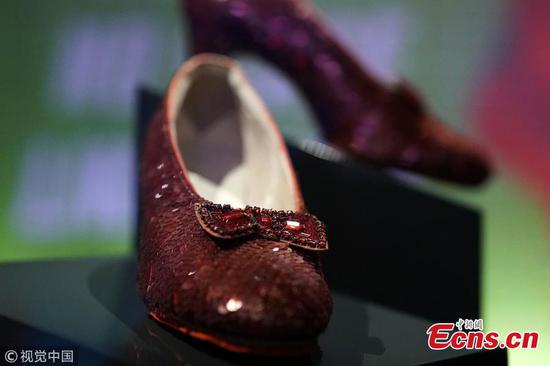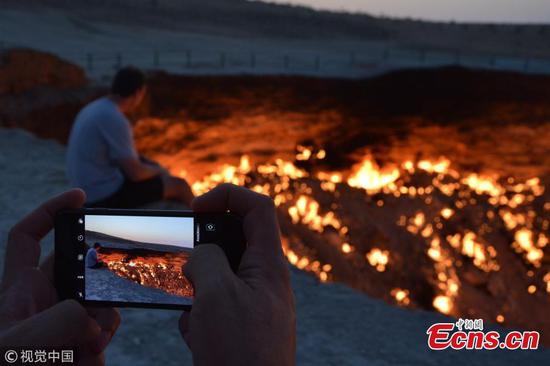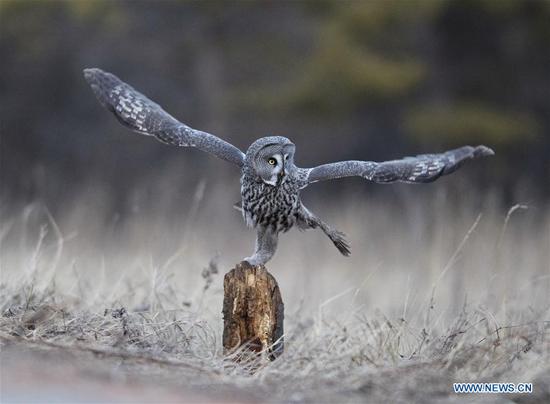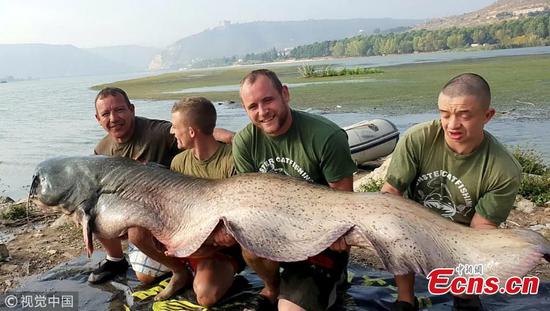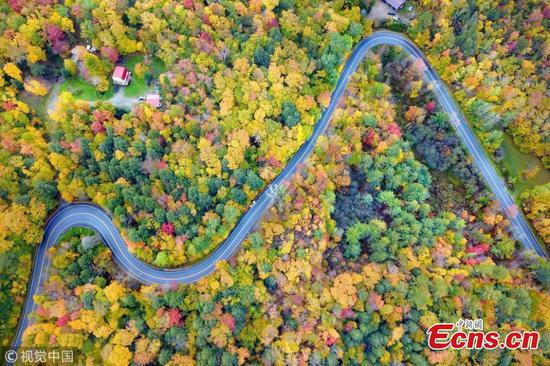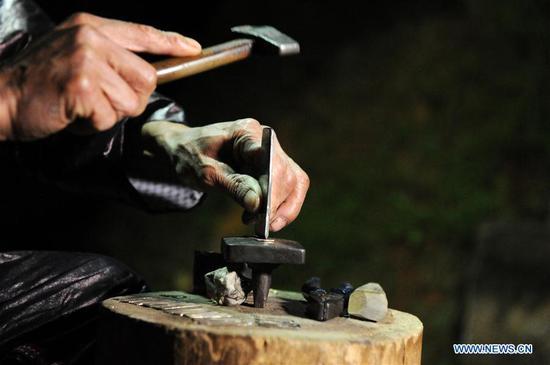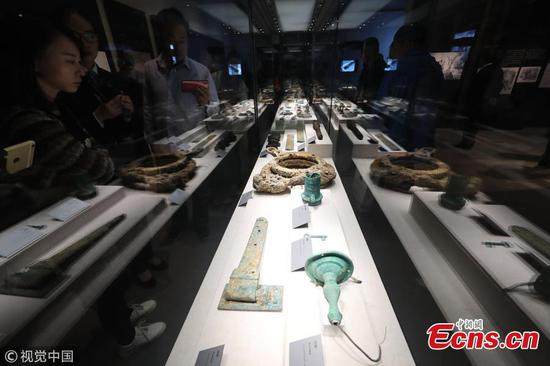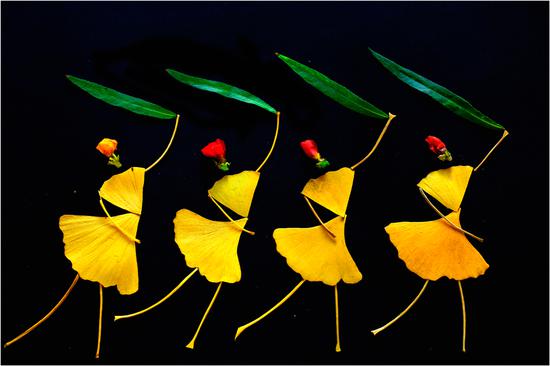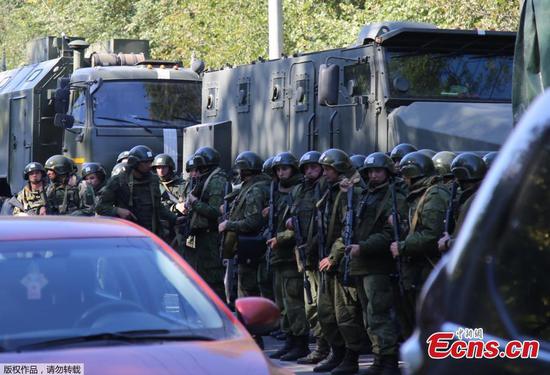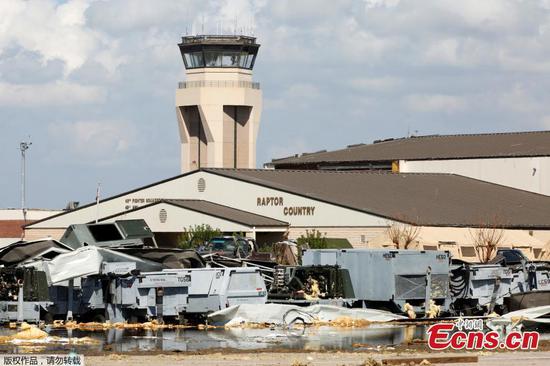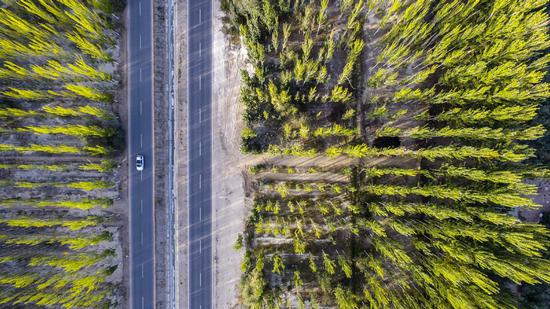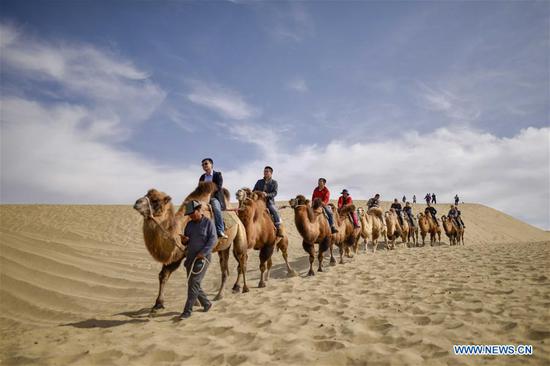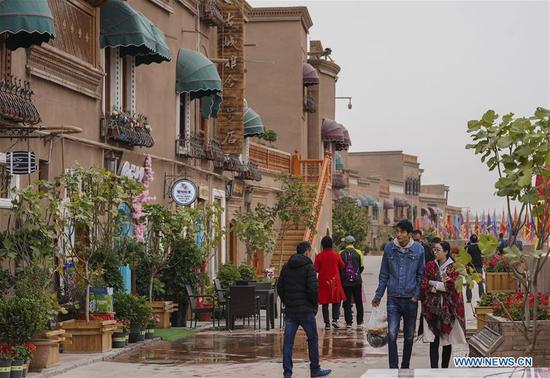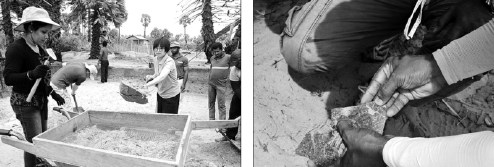
Archaeologists sift the dirt carefully (left) to discover the ancient ceramic pieces (right) at the Allaippidy site in Sri Lanka, majority of which appear to have been made in China and have traveled along the ancient maritime Silk Road. (Photo provided to China Daily)
Archaeologists from Shanghai Museum have unearthed a large number of ceramic pieces, most of which appear to be have been made in China, from the Allaippidy ruins in Sri Lanka, a country on the Indian Ocean.
This shows the links that existed between China and other countries through the ancient maritime Silk Road.
The discovery was announced on Sept. 29.
The archaeological team set out on its first overseas mission to Sri Lanka in August, when they took 40 days making a comprehensive survey of the harbor city of Jaffna and its surroundings, as well as the excavation sites in the Allaippidy and Kayts Fort ruins, according to Chen Jie, head of the team.
Chen and his colleagues excavated in an area of 92.4 square meters at the Allaippidy ruins, where 650 pieces of ceramic were found, more than 600 of which were made in China, he said.
Majority of the Chinese ceramic pieces date to the late half of the 11th century or the early 12th century, according to Lu Minghua, a researcher on Chinese ceramic with Shanghai Museum. There were bowls, plates, saucers and pots, mostly produced in places that are now located in present-day provinces of Guangdong and Fujian for the overseas sale.
The museum has increased its study of the ancient maritime Silk Road, according to museum director Yang Zhigang.
Historical documents in Sri Lanka and China show that visits between China and Sri Lanka started 2,000 years ago. In 1911, a stone tablet with inscriptions discovered in Sri Lanka spoke of Chinese explorer Zheng He making multiple visits to the island country to expand trade and friendship between the two countries.
The archaeological achievement will play an important role in the studies of the trading route of the ancient maritime Silk Road, transportation networks as well as cultural communication between China and Sri Lanka, Yang says.
The museum has signed a five-year partnership contract with the Central Cultural Foundation of Sri Lanka to research the history of the ancient maritime Silk Road, perform excavations in some of the important ruins and sites in Sri Lanka, present joint exhibitions and initiate staff exchanges.
It takes many hours by road from Colombo, the commercial capital of Sri Lanka, to Jaffna, which is situated in the north of the country. The Shanghai museum team also shared their expertise with colleagues in Sri Lanka on aviation photography, 3D modeling and ancient Chinese ceramic conservation, such as knowledge about characteristics of Chinese ceramic from different periods.
Shanghai Museum had a "successful excavation" in Qinglong town in suburban Shanghai two years ago, revealing the town's history as a trading center of Chinese ceramic, and the discoveries were showcased at a special exhibition.
"With the help of our partners in Sri Lanka, we hope to do the same with this project," Yang says.










